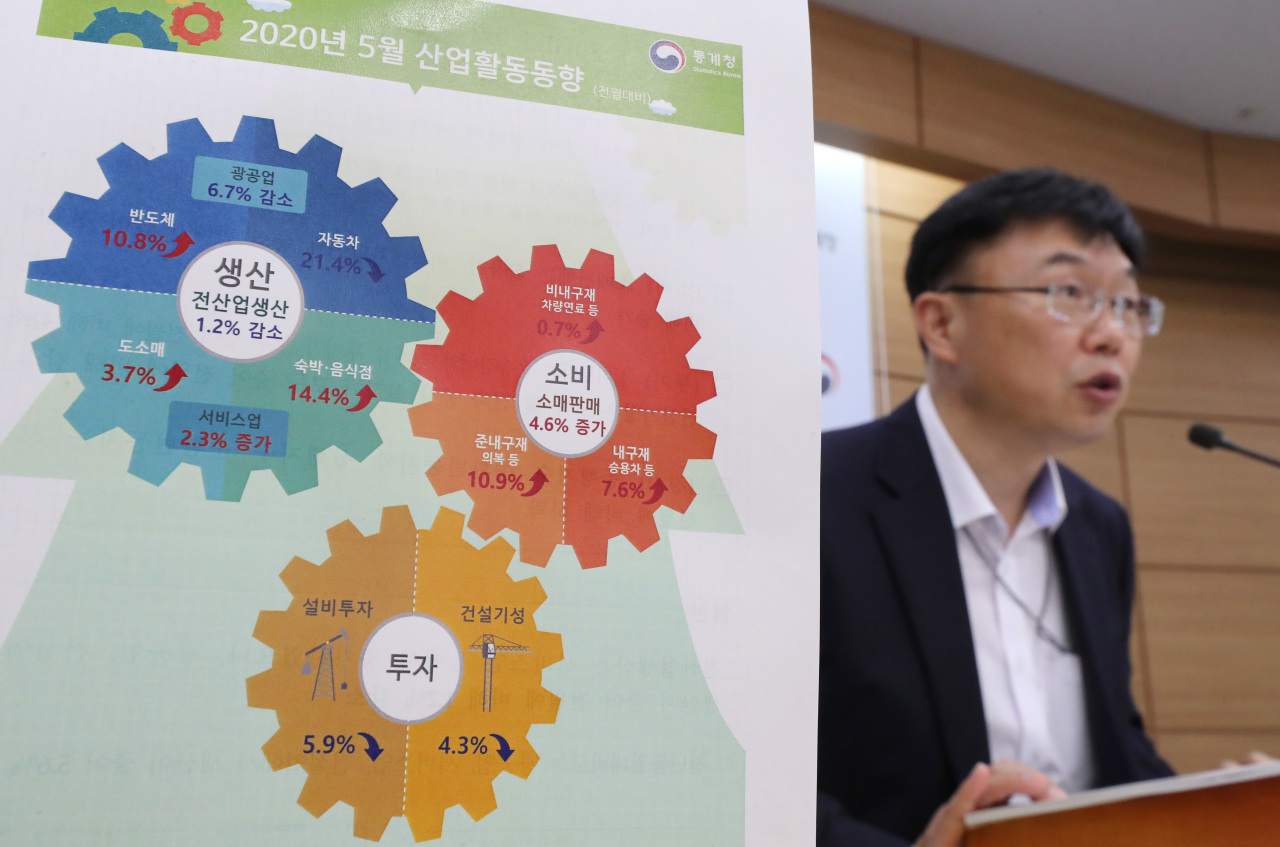 |
Ahn Hyung-joon, a senior official at Statistics Korea explains the latest data during a press briefing held at the Sejong government complex on Tuesday. (Yonhap) |
South Korea’s coincident index -- that summarizes current economic conditions -- plunged to the lowest level in 21 years in May amid the COVID-19 pandemic, data from Statistics Korea showed Tuesday.
The nation’s industrial output slipped 1.2 percent on-month as well, remaining in the negative terrain since January, when the outbreak of the virus here broke its gain throughout the fourth-quarter of last year. Investment in infrastructure dropped 5.9 percent in the same period.
The coincident index of cyclical data slipped 0.8 points on-month to 96.5, extending its loss for four consecutive months and marking the lowest since January 1999, when the country was reeling from the 1997 Asian financial crisis. The index has worked as a solid yardstick in measuring the current state of the economy since 1981, as it leaves out past factors and takes cyclical data linked to labor and manufacturing into its calculation.
The index for leading economic indicators, which is a gauge of the economy a few months ahead and is compiled using data such as job offers and consumer sentiment, slipped 0.3 points to 98.9, the lowest in nine months.
“It is difficult to say that the current economy is worse compared to the Asian financial crisis merely based on the indices, as they are used to measure a trend,” Ahn Hyung-joon, a senior official at Statistics Korea said in a press briefing tied to the data.
“But the fact that the figures are very low means our economy has (slipped) and gone astray from the long-term growth trend, while the drop itself reflects the shock of the 2008 financial crisis,” he added.
In line with the slip of the industrial output, the average capacity utilization rate of local manufacturers, which shows their productivity, dropped 5.9 percent on-month.
But retail sales inched up 4.6 percent on-month, buoyed by eased social distancing rules and relief cash payments worth a combined 14.3 trillion won ($11.6 billion) that has been distributed by the government since early May.
In early June, Korea proposed its third extra budget of 35.3 trillion won ($29 billion), following two similar budgets worth 24 trillion won passed by the parliament earlier this year.
The nation’s economy shrank 1.3 percent on-quarter in the January-March period, the sharpest quarterly contraction since the last three months of 2008.
Exports slipped 7.5 percent on-year in the first 20 days of June, spurring worries for the export-reliant economy.
Korea has so far reported some 12,800 COVID-19 cases, with the daily number of new local infection cases staying at around 50 or less for weeks.
By Jung Min-kyung (
mkjung@heraldcorp.com)








